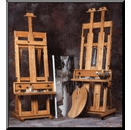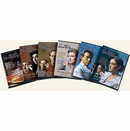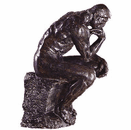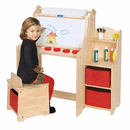For the Beginning Painter: Choosing Pastels as Your Medium
For the Beginning Painter: Choosing Pastels as Your Medium
So you’ve decided to try your hand at painting. Many beginning painters sign up for art classes at their local community college. There is also excellent instruction to be found online. As a beginner, you will need to select what kind of paint you will use. The most commonly used paints are acrylics, oils, watercolors and pastels. Each medium has its advantages and disadvantages, and each requires certain tools. Some of the tools you can expect to acquire are: paints, brushes, painting knives, palettes, canvasses, rags, turpentine, mineral spirits, etc. Many beginning artists find it helpful to purchase a painting kit that includes all of the basic tools in one collection.
Okay, so technically pastels are not paint. (Bonus: there are no brushes to clean!) But using pastels can be very gratifying to the beginning painter because of the control issue. Brushes take time and practice to master. By simply drawing with painterly effects, pastels can be a very satisfying “paint” medium. Colors are mixed on the paper by blending or overlaying them not on a palette as with other paint mediums. They are portable and easy to use outside the studio and there’s no drying time.
Using pastels usually requires the painter to acquire a greater range of colors to create a picture than for other paint mediums. Also, different brands and pigment vary in softness, so it will take some trial and error and experimenting to find your preferences. Pastels smudge easily and will need to be worked with carefully until the artwork is complete and a fixative can be applied. Often, pastel artists will place pieces of tracing paper on sections of their work to prevent unwanted smudging or transfer while working on a project. To get started you will need a range of colors, paper, board or easel and fixative.
So you’ve decided to try your hand at painting. Many beginning painters sign up for art classes at their local community college. There is also excellent instruction to be found online. As a beginner, you will need to select what kind of paint you will use. The most commonly used paints are acrylics, oils, watercolors and pastels. Each medium has its advantages and disadvantages, and each requires certain tools. Some of the tools you can expect to acquire are: paints, brushes, painting knives, palettes, canvasses, rags, turpentine, mineral spirits, etc. Many beginning artists find it helpful to purchase a painting kit that includes all of the basic tools in one collection.
Okay, so technically pastels are not paint. (Bonus: there are no brushes to clean!) But using pastels can be very gratifying to the beginning painter because of the control issue. Brushes take time and practice to master. By simply drawing with painterly effects, pastels can be a very satisfying “paint” medium. Colors are mixed on the paper by blending or overlaying them not on a palette as with other paint mediums. They are portable and easy to use outside the studio and there’s no drying time.
Using pastels usually requires the painter to acquire a greater range of colors to create a picture than for other paint mediums. Also, different brands and pigment vary in softness, so it will take some trial and error and experimenting to find your preferences. Pastels smudge easily and will need to be worked with carefully until the artwork is complete and a fixative can be applied. Often, pastel artists will place pieces of tracing paper on sections of their work to prevent unwanted smudging or transfer while working on a project. To get started you will need a range of colors, paper, board or easel and fixative.
Copyright © 2002-2025 Madison Art Shop™ LLC. All Rights Reserved.



















